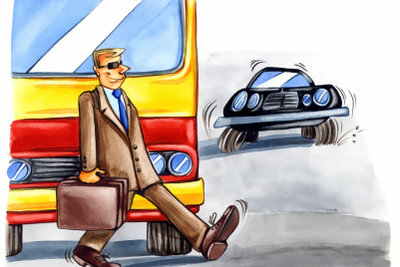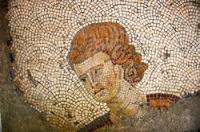Describe and interpret the caricature
Hardly any other art conveys as much expression as the caricature drawing. The caricature ranges from funny snapshots of well-known personalities to socio-critical aspects to wars and politics highly controversial issues, so that the caricaturist profession is a rather risky area of activity even in our time appears. It is all the more important to be able to interpret the message of a caricature and to make the artist's efforts so worthwhile. But what do you as a viewer have to consider in order to correctly describe and interpret a caricature?

Inventory - what you see on the cartoon
- So before you think about what a caricature says, you have to deal with what is depicted in a purely objective manner. Describe exactly what you see without assigning a specific rating to what you see. Record what the people depicted look like, what they are wearing and which features seem particularly emphasized. Describe possible color combinations and light-dark areas.
- Once you've covered the superficial aspects of what is portrayed, you can move on to a more in-depth inventory. You are primarily concerned with the composition of the caricature. Try to recognize supporting lines and consider where they meet, whether they can be combined into a geometric figure and which area of the image they bring into focus. Recurring lines and the question of the complexity of the type of representation may also be included.
- As an intermediate step towards the final interpretation, briefly analyze the text that is usually assigned to a caricature. Above all, go into the period to which it refers and, if objectively possible through the text, name the situation or the situation depicted. Person.
Describe and interpret
- Unlike the first step, you go in the interpretation the caricature subjectively reacts to what is seen. Establish connections between the caption and the depicted situation that are not immediately apparent. Connect the design of the picture with a deeper meaning to the author's intention and try to give the composition a value in the entirety of the work. Make assumptions about unrecognized people and justify them with more detailed contexts of the work and draw conclusions from clothing and situation to occupations or even larger contexts such as countries and nations.
- When you have given meaning to every aspect you see and have been able to embed it in an overall context of intention, you should ask yourself a few general questions. Determine which target group the artist wants to address and what exactly he is trying to achieve with his drawing. Try to find out which areas of the depicted might be controversial and go deeper into it Symbols one that includes the image so that backgrounds are revealed. Your subjective opinion as to whether the artist can achieve his goals can also be included in the interpretation.
- Before you even look into the bigger picture, you should be aware that it is political Background knowledge and a basic education on current political issues are usually the key to one Cartoon interpretation are. Many drawings are impossible to interpret without the necessary prior knowledge - but they are already described. So if you are lacking background, it is best to focus extra on the first step and not spend too much time interpreting.
A percept is about the first impression you get when looking at a ...
File the cartoon
- Classifying a caricature is probably the most important, but also the most delicate step in the analysis. In terms of content and form, a distinction is made between different groups of caricatures. Only when you have established a coherent overall context can you finally classify and thus prove that you have actually understood what is being depicted.
- Formally, a distinction is made between factual caricature, in which the focus is on an object for the representation of political personal actions of a person and the personal individual caricature, where a special characteristic of a person is extreme is highlighted. The third group makes up the type caricature, which reflects entire peoples, clubs or social groups through a typical representative.
- In terms of content, a distinction is finally made between status, process and event caricature, with the fourth group being the spontaneous snapshot is clear from the others thanks to its satirical and rather easy-to-understand, funny presentation delimits. Finally, the status caricature refers to a social situation that is worthy of criticism and that lasts over a longer period of time is rather difficult to change, while the caricature of a specific and current political event such as elections on the shovel takes. The process caricature is mostly different from the others by its often three-part representation in was, is and will be differentiated because it always refers to a social change.
In general, a correct classification of the caricature also includes the assignment of an artist, but you do it don't worry - only fans of the genre who have practiced caricature interpretation over the years can do that to have. And, who knows, maybe you too will develop a preference for caricature interpretation with the right approach for the caricature, so that at some point you will be able to make some final speculation about the artist.
How helpful do you find this article?


